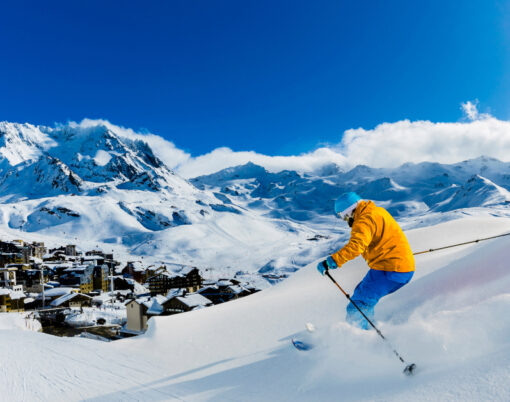Aberdeen, bonnie Scotland’s third largest city, is located 93 miles northeast of Edinburgh and features a long, sandy coastline. As a result of the discovery of North Sea oil in the 1960s the city has prospered and due to the unearthing of prehistoric settlements around the mouths of the rivers Don and Dee. The areas surrounding Aberdeen date back at least 8,000 years, and there is much to explore.
Arriving rather late and feeling weary I made my way to the Sandman Signature, a contemporary hotel and spa located on St Andrew’s Street, in the centre of the city. After a swift and efficient check-in my luggage was whisked away and I was escorted to an executive suite measuring 502 square feet. The modern furnishings and colourful, soothing décor, ensured that I felt relaxed and I was delighted with the fully equipped kitchen, which features a fridge freezer, hob, and microwave. After a long soak in the free-standing tub I climbed into the super king bed and embarked on a deep and comfortable slumber.

Up with the larks and following a luxurious shower and a piping hot coffee, I was ready to explore the city. I hurried along to the Aberdeen Art Gallery, which is a short stroll away on Schoolhill and is simply crammed with treasures. This striking property, which reopened in 2019 following four years of extensive refurbishment, reflects a neo-classical style. On arrival, I was delighted to discover an inviting café on the ground floor, which was the ideal place to browse through some literature that I had collected from the reception. I ordered the first-class Eggs Benedict with a chilled glass of fresh orange juice and I was ready to explore the gallery.
The property was originally opened in 1885 and the collections are defined by Archaeology, which includes a wide array of medieval material; Fine Art, which features mesmerising masterpieces by Renoir and Monet, alongside other gems; Textiles, Fashion and Jewellery; Craft and Applied Art; Coins, Medals and Tokens; and Social History, which reflects the experiences of locals at work and at leisure. Science, Technology and Industry, meanwhile, will not fail to retain the viewer’s interest and the Maritime History section is where, I must confess, I spent an extensive period of time inspecting the intriguing exhibits.

For those of us with a history of sea faring, a visit to the Maritime Museum, a short walk away, is a must. Located on Shiprow, by the harbour, this museum presents fascinating exhibits, recording the story of the city’s long history with the sea, beginning with the history of shipbuilding, fishing and trading and ending with the intriguing story of off-shore energy.
As I entered the property I spotted the splendid bronze sculpted figures reflecting the city’s fishing heritage. I wandered around at leisure and admired the displays of artworks confirming Aberdeen’s rich maritime history and I was enthralled by the very detailed models of ships dating back to 1689. One of the many highlights includes a model of the Thermopylae, the Aberdeen-built tea clipper, which was built in Dumbarton, Scotland, in 1869, and is considered to be a rival to the famous Cutty Sark.
Approximately three thousand ships were built in Aberdeen between 1790 and 1989 and another interesting exhibit includes the ship plans of the Jho Sho Maru, one the modern Japanese navy’s warships. The off-shore energy exhibits include a model of the Murchison oil production platform, which is nine metres high and certainly fires the imagination as to the life of those who work in the industry.

Another of the many highlights of my explorations was a visit to the Gordon Highlander’s Museum on St Luke’s Viewfield Road. I hopped on bus number eleven and was there in a jiffy. The Gordon Highlanders, a regiment of the British Army, was raised in 1794 by the 4th Duke of Gordon and included local fishermen, farmers, labourers, ghillies, members of the aristocracy and students and Winston Churchill described it as ‘the finest regiment in the world’.
With a history spanning two hundred years, the regiment formed during the Napoleonic era and continued through the Victorian and Edwardian ages, WWI and WWII and through the twentieth century. Exhibits include a WWI replica trench, which gives some insight into how intolerable the conditions of war are and how brave those who fought were. A beautiful collection of regimental silver caught my eye and I was mesmerised by the collection of eleven original Victoria Crosses. In 1994 the regiment was amalgamated with the Camerons and the Seaforths to form the Highlanders regiment.

Another popular attraction, which draws the crowds, is St Machar’s cathedral, located on The Chanonry. St Machar’s is Aberdeen’s oldest building in active use and dates back to the early part of the fifteenth century. Its features include a heraldic ceiling, which dates back to 1520 and displays 48 coats of arms including Pope Leo X and following the execution of Sir William Wallace in 1305, a Scottish knight who was one of the leaders during the First War of Scottish Independence, his body was cut up and sections were sent to several places in the country in order to deter rebels. His left quarter is buried in the walls of the cathedral.
Back to the hotel, and after a short nap, I decided to dine in-house and headed for the Chop Grill Bar. I was escorted to a table and I ordered the battered haddock and a glass of Sauvignon Blanc, which were served with aplomb.
After a long lie in and a refreshing shower I donned my hiking boots and ordered a taxi for the half-hour journey to the spectacular Dunnottar Castle, which was featured in Franco Zeffirelli’s movie Hamlet with Mel Gibson in the lead role.
This medieval ruin at the top of an isolated rocky outcrop is separated from the mainland and surrounded by the North Sea on three sides. The surviving buildings date back to the 15th and 16th centuries and, due to its location and defensive might, it played an essential role in the history of Scotland by protecting the Scottish crown jewels from Cromwell‘s invasion during the 17th century.

From the 14th century the castle was owned by the Keiths, a Highland and Lowland clan who held the seat of the Earl Marischal. Dunnottar fell into decline when George Keith, who was the last Earl, joined the 1715 Jacobite rebellion and his titles were forfeited. The restoration of the property took place during the 20th century and twelve structures on the site are listed buildings.
As my visit to Aberdeen came to an end I wandered around the site and gazed across the North Sea and reflected on the words of Lord Byron, one of the city’s most gifted residents: ‘There is pleasure in the pathless woods, there is rapture in the lonely shore, there is society where none intrudes, by the deep sea, and music in its roar; I love not Man the less, but nature more’.
Factbox
Flights – British Airways departs daily from LHR to ABZ. Flight duration 1.5 hours.
Accommodation – For more details on the featured accommodation visit sandmansignature.co.uk
To do – The Ballater Highland Games take place at Monaltrie Park (one hour by road from the Marcliffe Hotel) on the second Thursday in August.
Images, excluding accommodation and feature image, provided by visitScotland and visitAberdeenshire






















